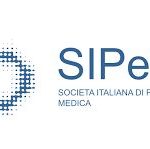
Don’t use non-interactive lectures as the main teaching method. Privilege the use of interactive methods instead.
Lectures remain the more common method used in medical education, from graduate courses to continuous medical education, often in the complete ignorance of the basic principles of adult learning, and typically using text-intensive, confounding powerpoint presentations on which, rather than on the audience, concentrates the attention of the teacher (so called “didactic karaoke”). These methods are associated with low attention and with low content retention by most learners.
Sources
1. Miller, G. A.The magical number seven, plus or minus two: Some limits on our capacity for processing information. Psychological Review 1956; 63: 81–97.
2. Reynolds, G. Presentation Zen: Simple Ideas on Presentation Design and Delivery. New Riders, Berkeley (CA), 2012.
3. Davis D; Thomson O'Brien MA; Freemantle N; Wolf FM; Mazmanian P; Taylor-Vaisey A. Impact of Formal Continuing Medical Education. Do Conferences, Workshops, Rounds, and Other Traditional Continuing Education Activities Change Physician Behavior or Health Care Outcomes? JAMA 1999; 282: 867-74.
4. Forsetlund L, Bjørndal A, Rashidian A, Jamtvedt G, O'Brien MA, Wolf F, Davis D, Odgaard-Jensen J, Oxman AD. Continuing education meetings and workshops: effects on professional practice and health care outcomes. The Cochrane Database of Systematic Reviews 2009; 2: CD003030
5. Marinopoulos SS et al. Effectiveness of Continuing Medical Education. Agency for Healthcare Research and Quality U.S. Department of Health and Human Services. 2007.
6. Prober CG, Heath C. Lecture halls without lectures-a proposal for medical education. N Engl J Med 2012; 366: 1657-9.
Attention. Please note that these items are provided only for information and are not intended as a substitute for consultation with a clinician. Patients with any specific questions about the items on this list or their individual situation should consult their clinician.


Recent Comments